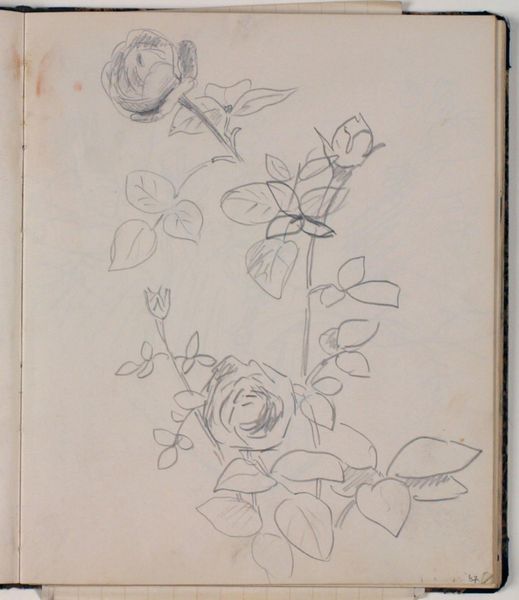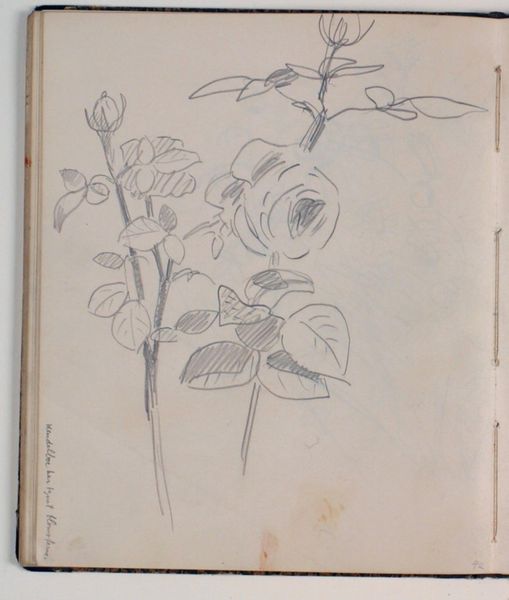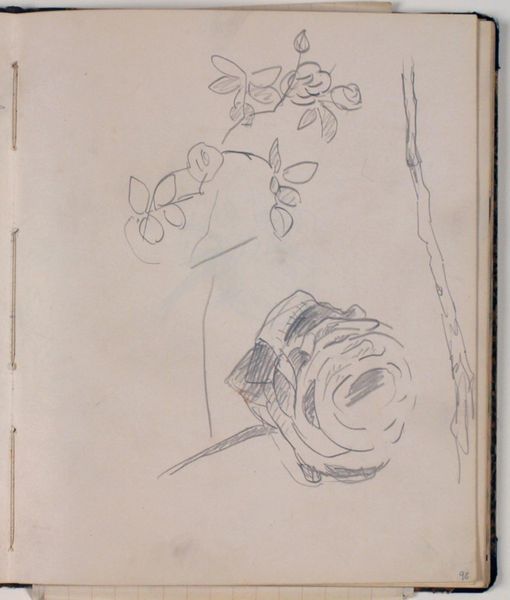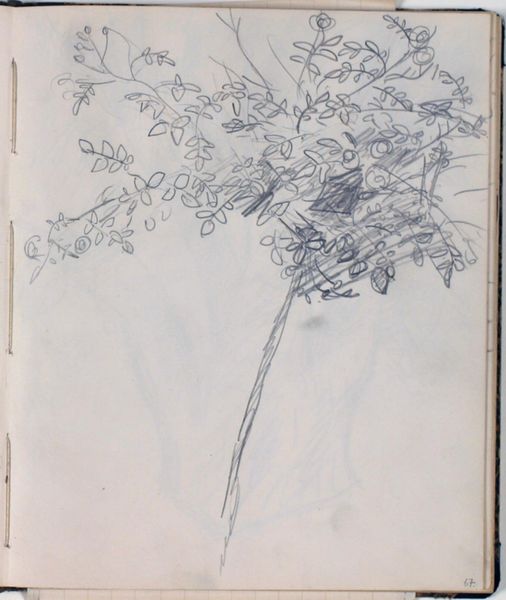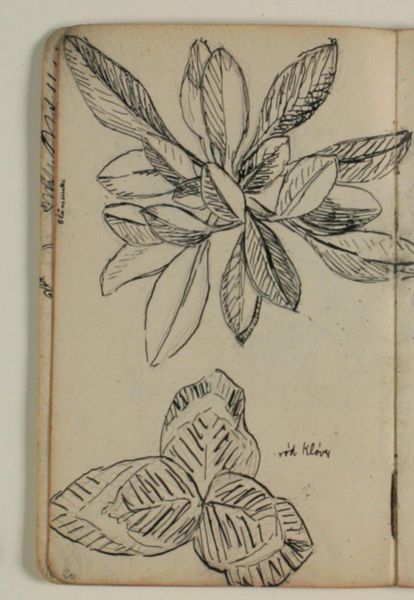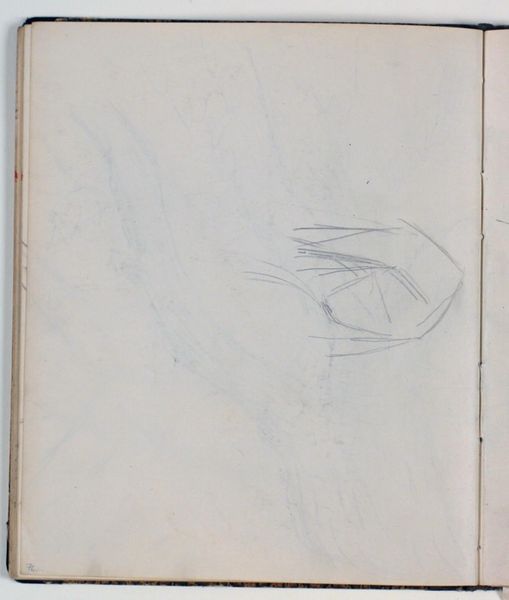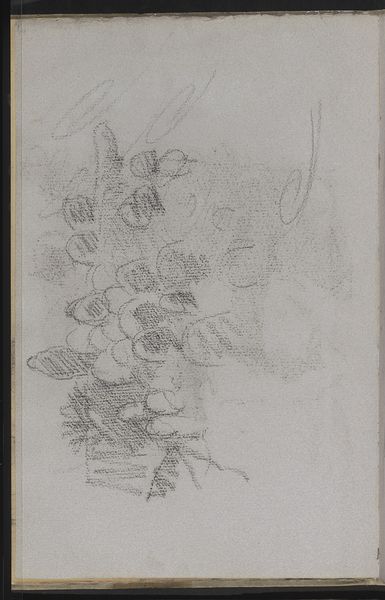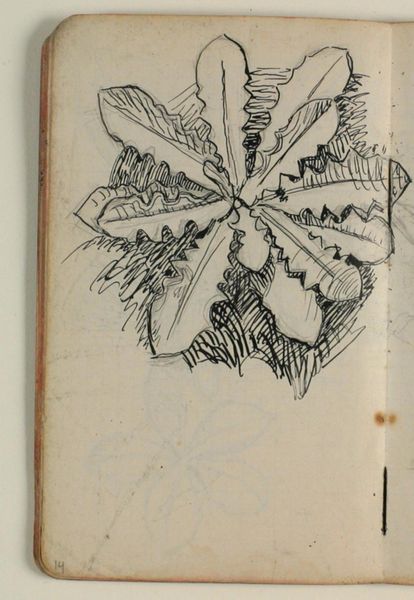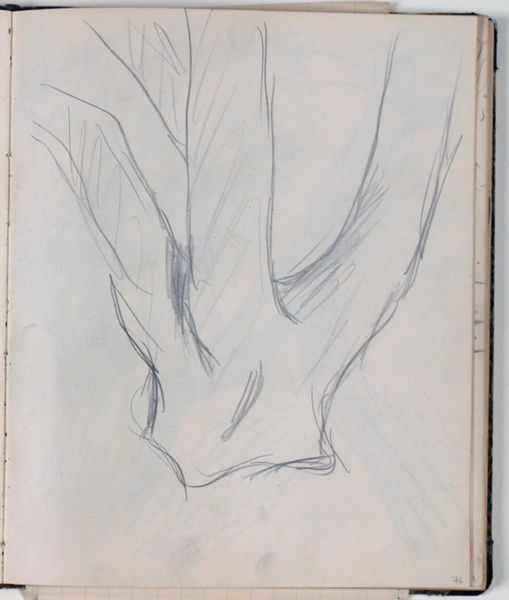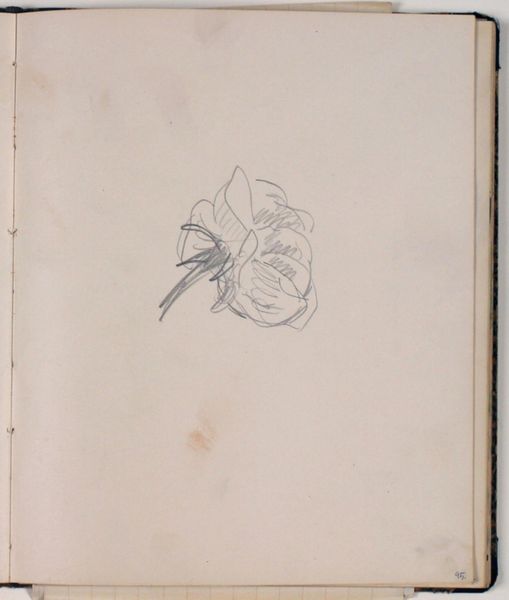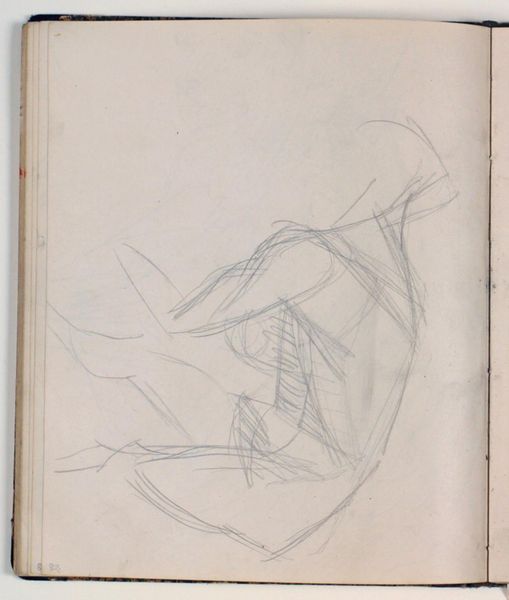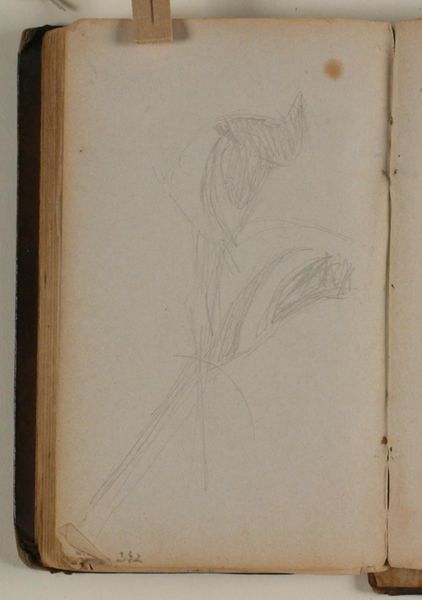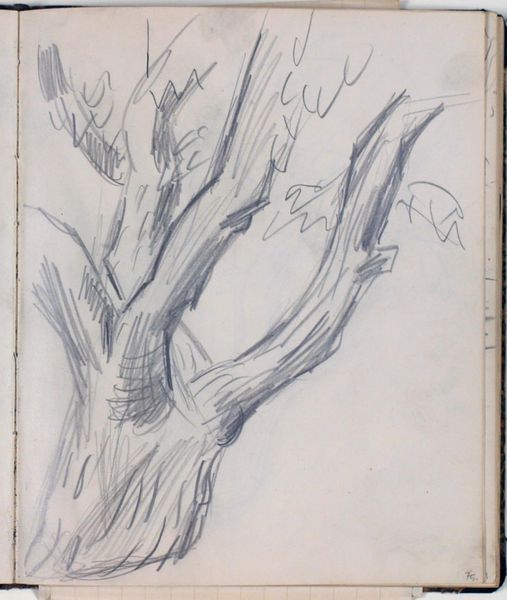
drawing, paper, pencil
#
drawing
#
organic
#
paper
#
pencil
#
realism
Dimensions: 226 mm (height) x 185 mm (width) x 112 mm (depth) (monteringsmaal), 221 mm (height) x 184 mm (width) (bladmaal)
Curator: We’re looking at "Studie af rose," a drawing of a rose by Niels Larsen Stevns, created sometime between 1930 and 1936. It’s rendered in pencil on paper and currently resides here at the SMK, Statens Museum for Kunst. Editor: My initial feeling is tenderness. The lines are delicate, tentative almost. It feels like a secret, a whispered observation. Like capturing something fleeting. Curator: I'm immediately drawn to the materials. A simple pencil and paper. These materials speak to accessibility and the democratic nature of drawing. No grand gestures or expensive oils. Just humble observation. The physical support, we can tell this comes from a sketchbook due to the composition of the book edge. Editor: Precisely! And the humbleness feeds into the intimacy. It’s not shouting for attention. You imagine Stevns, sitting perhaps in a garden, quietly studying this single rose. Almost meditative. You can really feel the connection between the rose and the artist who drew the petals and the leaves in its entirety. Curator: Looking at the artistic production period here it's a crucial element. Post-World War One. We start questioning grand narratives. The act of observing this simple flower, rendered with such sensitivity, speaks to a yearning for simplicity in a world grappling with immense change. A kind of refusal to engage with the dominant visual language of propaganda and war. It’s domestic; it’s a moment of peace. Editor: Yes, and beyond a 'yearning for simplicity', there’s an appreciation for ephemerality. Roses don’t last, they are constantly shifting in color and shape, it mirrors life and everything ending! There's beauty even in this ending! Capturing this specific bloom in time seems especially meaningful given that understanding. Curator: Absolutely. I also see how the material choices and the production become interwoven. Stevns made a decision to go for a cheaper and more accessible process that focuses attention on this flower. A study in light and shadow. Editor: The economy of the lines really amplifies that. It's about suggesting, not defining, which I love. This rose can be any rose and every rose, depending on the observer. Thanks for walking me through this one, Curator! Curator: Likewise, Editor. Thinking about the period with you allowed me to see how something so apparently humble could have greater significance, by understanding the history surrounding the artworks making, like it did for our reflection on roses.
Comments
No comments
Be the first to comment and join the conversation on the ultimate creative platform.
